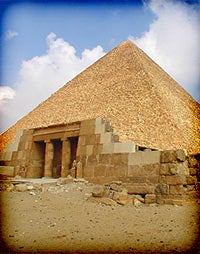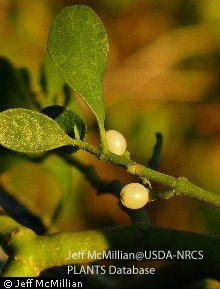_______
For “Summary Saturday”, News, Some New, Some Old.
But first this interesting info from a book written by Pope Benedict.
Truth or Tradition?
“When was Jesus born? Why does it matter?”
Transcript: [Steve Myers] “It's the Christmas season. And with that in mind, I got a copy of a book that was written by Pope Benedict and it's called, “The Infancy Narratives: Jesus of Nazareth ". It concerns itself a lot with traditional views of what Christmas was all about. And it's very interesting what the Pope had to say. In fact, it's kind of created a bit of a controversy in many circles about some of the things that he wrote. And it has to cause us to answer the question, is what we do out of truth or tradition?
Why do we do the things that we do when it comes to worshipping and honoring God? What do we do? But one of the things that the Pope wrote about in regards to Christmas was pinpointing the date of Jesus' birth. And when it comes to that, most people will assume it was 0 A.D.
[Darris McNeely] Just like they assume so many other traditions of Christmas are in the Bible or are factual. To get a figure like the Pope writing a book like this is interesting because of what he brings out whether or not people will actually stop and think, "What else is not true about this particular teaching, holiday? What else do I need to know?" That'll be yet to be determined.
[Steve Myers] Yeah, what many don't realize is that the date of Christmas is certainly suspect. Here's what the Pope writes about this idea of being, Christ being born at 0 A.D. He says, "The starting point for our reckoning time, the calculation of Jesus' date of birth, goes back to the Monk Dionysius Exiguss," which means Dennis the Small for those of us who don't speak Latin.
[Darris McNeely] Thanks for pointing that out.
[Steve Myers] Yeah, it's kind of interesting. But he says, "Who evidently miscalculated by a few years. The historical date of the birth of Jesus is therefore to be placed a few years earlier." Now, it's interesting that the Pope himself recognizes that Christ wasn't born in 0 A.D. And in fact, if you go to Catholic writings themselves, the New Catholic Encyclopedia says this, "Inexplicable as though it seems, the date of Christ's birth is not known." Now they take it a step farther than the Pope and they say, "The gospels indicate neither the day nor the month." So not only 0 A.D. is a false concept, but the idea that Christ would've been born on December 25th in the winter time is a fallacy. There is no way that that's possible according to the Bible.
[Darris McNeely] Again, it just points to the fact that many of the traditions normally associated with Christmas are not found in the Bible and in fact don't always match up with the historical reality, which brings us back to what is the proper way to worship God, to honor Jesus Christ, and to understand Him? No better verse probably than John 4:23 where Jesus Christ Himself said, "The hour is coming and now is when the true worshippers will worship the Father in spirit and truth, for the Father is seeking such to worship Him." God must be worshipped in spirit and in truth. And examples like this and many, many others that can be brought out regarding Christmas traditions, even other traditions such as Easter point to the fact that most are not worshipping God according to truth. The fact that a religious figure like Pope Benedict XVI points it out should give us all pause to think and to search into it to find out what else is wrong, and what do we really need to know, and what is the truth?
[Steve Myers] There's a few other things to think about when it comes to Christmas traditions and we'll talk about that in a couple of future BT Dailies . So, we'll look for you the next time.” From: http://www.ucg.org/beyond-today-daily/christian-living/truth-or-tradition Wednesday, December 19, 2012
______
12 Things to Know about Mistletoe
The white berries of mistletoe plants are poisonous to humans but valuable food to many other species.
“Often used as a symbol of renewal because it stays green all winter, mistletoe is famed for its stolen-kisses power. But the plant also is important to wildlife, and it may have critical value for humans, too.
Extracts from mistletoe—newly used in Europe to combat colon cancer, the second greatest cause of cancer death in Europe and the Americas—show signs of being more effect against cancer, and less toxic to humans, than standard chemotherapy.” From: http://blog.nwf.org/2012/12/12-things-to-know-about-mistletoe/
--------
Kiss Cancer Goodbye with Mistletoe?

 “Turns out that mistletoe—that romantic staple of holiday gatherings—may have an even more important role: cancer fighter.
“Turns out that mistletoe—that romantic staple of holiday gatherings—may have an even more important role: cancer fighter.
Mistletoe has long been a popular alternative remedy for people with cancer. The National Cancer Institute website says that “In certain European countries, preparations made from European mistletoe are among the most prescribed drugs for patients with cancer.” The NCI also says that mistletoe has been widely studied as a complementary therapy, but though there have been some promising results in lab and animal studies, there have been few solid, scientific studies in humans.” More at: http://www.rd.com/recommends/kiss-cancer-goodbye-with-mistletoe/
_______
Victories Over Fossil Fuels Strengthen Our Resolve
Earthjustice set to make 2013 the year to powerfully engage climate change

“Earthjustice has just won two major victories over fossil fuels that strengthen our resolve to make 2013 the year America turns from these dirtiest of energy sources and moves towards a clean energy future—the only real solution to climate change.
On Friday, the Environmental Protection Agency reacted to Earthjustice legal action by adopting drastic limits on the amount of soot poured out from coal-fired power plants and tailpipes. This powerful achievement will save thousands of lives a year and slow climate change by reducing pollution that accelerates sea ice melt.
And, a few weeks ago, we learned that the Danskammer coal-fired power plant, one of New York’s dirtiest polluters, will be retired and torn down. Recent Earthjustice legal action helped bring about this happy outcome, aided by flooding from superstorm Sandy, a storm made fiercer by the climate-changing emissions from coal power plants like this one.” More at: http://earthjustice.org/blog/2012-december/victories-over-fossil-fuels-strengthen-our-resolve
_______
EPA data show dispersants plus oil are more toxic than either alone
“In an earlier post, I noted in haste some apparent discrepancies between EPA and BP acute toxicity data on the Corexit® dispersants. Little did I realize that the data mix-up was actually telling me something much more significant: that the dispersant maker’s own test data demonstrate that the combination of oil plus dispersant is quite a bit more toxic than the dispersant alone and – even more significant – the combination is more acutely toxic than the oil by itself.
Let me repeat that: The data indicate that dispersed oil is more toxic than un-dispersed oil. EPA has posted the dispersant manufacturer Nalco’s “Technical Product Bulletins” for each of the dispersants that have been used in the Gulf: Corexit® EC9527A and Corexit® EC9500A.
Now obviously these volumes are a tiny fraction of the volume of the Gulf, or even of the region of the Gulf where the dispersant have been sprayed and injected.
But that still adds up to a lot of extra toxicity to release into the Gulf, especially when you consider it could well be increasing, rather than decreasing the acute lethal toxicity of the oil.” From: http://blogs.edf.org/nanotechnology/2010/06/14/epa-data-show-dispersants-plus-oil-are-more-toxic-than-either-alone/
_______
BP oil spill cleanup toxic to key species
 An oil-covered brown pelican sits in a pool of petroleum off the Louisiana coast on June 5, 2010. Oil-spill recovery efforts sometimes have to choose between allowing oil to flow into sensitive coastal fish and bird habitats, or dispersing it into subsea depths where it can kill plankton-like species. (Sean Gardner/Reuters)
An oil-covered brown pelican sits in a pool of petroleum off the Louisiana coast on June 5, 2010. Oil-spill recovery efforts sometimes have to choose between allowing oil to flow into sensitive coastal fish and bird habitats, or dispersing it into subsea depths where it can kill plankton-like species. (Sean Gardner/Reuters)
“Using oil-dispersing chemicals during the massive 2010 spill in the Gulf of Mexico likely did far more damage than good to a crucial aquatic animal, according to new research that wades into the hotly contested question of whether and when to use the chemicals following an oil spill.
The dispersant used by oil company BP, when mixed with crude oil, was found to be 52 times more toxic than oil alone to some microscopic plankton-like organisms called rotifers.
"What remains to be determined is whether the benefits of dispersing the oil by using Corexit are outweighed by the substantial increase in toxicity of the mixture," said study co-author Terry Snell, chair of Georgia Tech's biology school. "Perhaps we should allow the oil to naturally disperse. It might take longer, but it would have less toxic impact on marine ecosystems." More at: http://www.cbc.ca/news/business/story/2012/11/30/bp-oil-spill-dispersants-rotifers-study.html
_______
Maker Pulls Pesticide Amid Fear of Toxicity
SAN FRANCISCO — “A manufacturer has pulled a controversial pesticide from the American market, surprising both growers and environmentalists who have warned that it poses serious hazards. The soil fumigant, known as methyl iodide and sold under the label Midas, will be withdrawn immediately as a result of a review of the product’s “economic viability in the U.S. marketplace,” the Tokyo-based company, the Arysta LifeScience Corporation said.
In hearings on the chemical, intended for use on the state’s lucrative strawberry crop, scientists and environmental activists raised concerns about its neurotoxicity and its potential to cause cancer and neurodevelopmental disorders. One member of the department’s own scientific review committee called it “one of the most toxic chemicals on earth.” Still, the company’s sudden removal of the product was unanticipated. “We were totally surprised by this,” said Carolyn O’Donnell, a spokeswoman for the California Strawberry Commission, a growers’ organization. The state’s farmers grow 88 percent of the nation’s strawberries, worth some $2.3 billion a year.” From: http://www.nytimes.com/2012/03/22/us/pesticide-pulled-from-us-market-amid-fear-of-toxicity.html
_______
This Week's Amazing Fact

Cheops (Giza) Pyramid
“As one of the world's oldest structures (4,600 years), the great Giza pyramid is the sole survivor of the seven wonders of the ancient world. It is believed that a massive, enslaved force of about 25,000 men and women built the colossal structure. It took 20 years to raise, using approximately 2.3 million blocks with an average weight of about 2.5 metric tons. The largest block weighs as much as 15 metric tons.
The pyramid currently stands more than 450 feet high, but at its height it stood 480 feet (50 stories)! It stood as the tallest manmade structure for more than 43 centuries—surpassed only in the nineteenth century. It also boasts a 13.6-acre base.
The sloping angle of its sides is 51 degrees and 51 minutes. Each side is oriented with one of the cardinal points of the compass (north, south, east, west). The pyramid is located at the exact center of the earth's landmass, and the average height of all the land above sea level, as measured only by modern-day technology, is 5,449 inches—the exact height of Cheops.
In addition, the interior stones fit so well that even a business card won't fit between them. It’s engineering prowess was so advanced that current technology still can’t duplicate the structure.
The pyramid's core was constructed mostly of soft limestone blocks weighing between 4,000 to 40,000 pounds, but the outer layer of the pyramid is crafted in a beautifully bright, protective layer of polished stone superior in durability against the elements. The casing stones, 144,000 in all, were so brilliant that when sunlight reflected off them, they could be seen from the mountains of Israel hundreds of miles away.
These outer “casing stones” are missing today because of a 13th century earthquake, which loosened them. Arabic looters, recognizing this great quarry of precut stones, carted these off to finish construction of palaces and mosques.”
_______
On This Day:
Beethoven's Fifth Symphony given world premiere in Vienna, Dec 22, 1808:
“If the initial reviews failed to recognize it as one of the greatest pieces of music ever written, one needs to understand the adverse conditions under which the work was first heard. The concert venue was freezing cold; it was more than two hours into a mammoth four-hour program before the piece began; and the orchestra played poorly enough that day to force the nearly deaf composer—also acting as conductor and pianist—to stop the ensemble partway into one passage and start again from the very beginning. It was, all in all, a very inauspicious beginning for what would soon become the world's most recognizable piece of classical music: Ludwig van Beethoven's Symphony No. 5 in C Minor, Op. 67—the "Fifth Symphony"—which received its world premiere on this day in 1808.
Also premiering that day at the Theater an der Wien in Vienna were Beethoven's Piano Concerto No. 4 in G major, Op. 58, and the Symphony No. 6 in F major, Op. 68—the "Pastoral Symphony." But it was the Fifth Symphony that, despite its shaky premiere, would eventually be recognized as Beethoven's greatest achievement to that point in his career. Writing in 1810, the critic E.T.A. Hoffman praised Beethoven for having outstripped the great Haydn and Mozart with a piece that "opens the realm of the colossal and immeasurable to us...evokes terror, fright, horror, and pain, and awakens that endless longing that is the essence of Romanticism."
That assessment would stand the test of time, and the Fifth Symphony would quickly become a centerpiece of the classical repertoire for orchestras around the world. But beyond its revolutionary qualities as a serious composition, the Fifth Symphony has also proven to be a work with enormous pop-cultural staying power, thanks primarily to its powerful four-note opening motif—three short Gs followed by a long E-flat. Used in World War II-era Britain to open broadcasts of the BBC because it mimicked the Morse-code "V" for "Victory," and used in the disco-era United States by Walter Murphy as the basis for his unlikely #1 pop hit "A Fifth Of Beethoven," the opening notes of Beethoven's Fifth Symphony have become a kind of instantly recognizable musical shorthand since they were first heard by the public on this day in 1808.”
--------
Beethoven Symphony No.5 - Canadian Brass
Canadian Brass is joined by principal members from two of the great names in brass, New York Philharmonic & Boston Symphony Orchestra.
---------
Or, if you prefer the more traditional orchestra:
---------
Saving the songbird that inspired Beethoven
“The ortolan bunting, a little songbird said to have inspired Beethoven's fifth symphony, is about to disappear in Switzerland. The species can only be found at a few sites in canton Valais. To stop the species dying out, the canton together with the Swiss Ornothological Institute has started an unusual rescue campaign.”
_________
Yesterday:
While I was writing this and listening to Beethoven, my son Kevin drove up. He has a tree felling and stump grinding business and was going by here on his way home from a job in Huntsville, (TX) so he was pretty grubby.
While we were were talking, a call came from the SPCA. Prime, my foster cat, is probably going to her new home today. A lady and her mother are coming to adopt her during Adoption Day.
After Kevin left, I was packing up Prime’s food and favorite toys with tears in my eyes. Why is she still up for adoption? Well, she would outlive me, and I don’t want her to wind up in a cage at a rescue, I want her to have her ‘furever’ home now. I have fostered this sweet cat for nearly four years now, and have dreaded this day.
![images[5] images[5]](https://blogger.googleusercontent.com/img/b/R29vZ2xl/AVvXsEjvz0beZikHme6JdP8Dj0m616EXAjU8L6gYaY7tQ-x5KKAfju5jcHKP_daR1ia7nfiglSZQTdo49H1nn3beUniRZW0ghYqU4MEsPp1JF2663vuUBl55U9kqbfHMsd17MT-GaNdrHzsFxnGD/?imgmax=800)
![images[7] images[7]](https://blogger.googleusercontent.com/img/b/R29vZ2xl/AVvXsEhKdrrVbUzV62_Om4CV6KKocsPWF1jvrcaaWz01Jkjj9yGTt2cpO0TEGi6UryyoKiF0eUZbNj7iQd9gZCVHhGzxwtkkIcOAZN-S8671iCWBfm6uMiR3ydjOkaO_Bs2i5hQh2iejlZKjRv5V/?imgmax=800)




















2 comments:
That is as bad or worse than when the kids grow up and leave home.
Thank you for your comment, DD.
When my youngest son left home, I was glad, it was about time, as he knew it all. (He thought)
Yes, Prime is already being missed by me and my dog. But I feel confident that she now has a good 'furever' home.
Happy Tails and Trails, Penny
Post a Comment